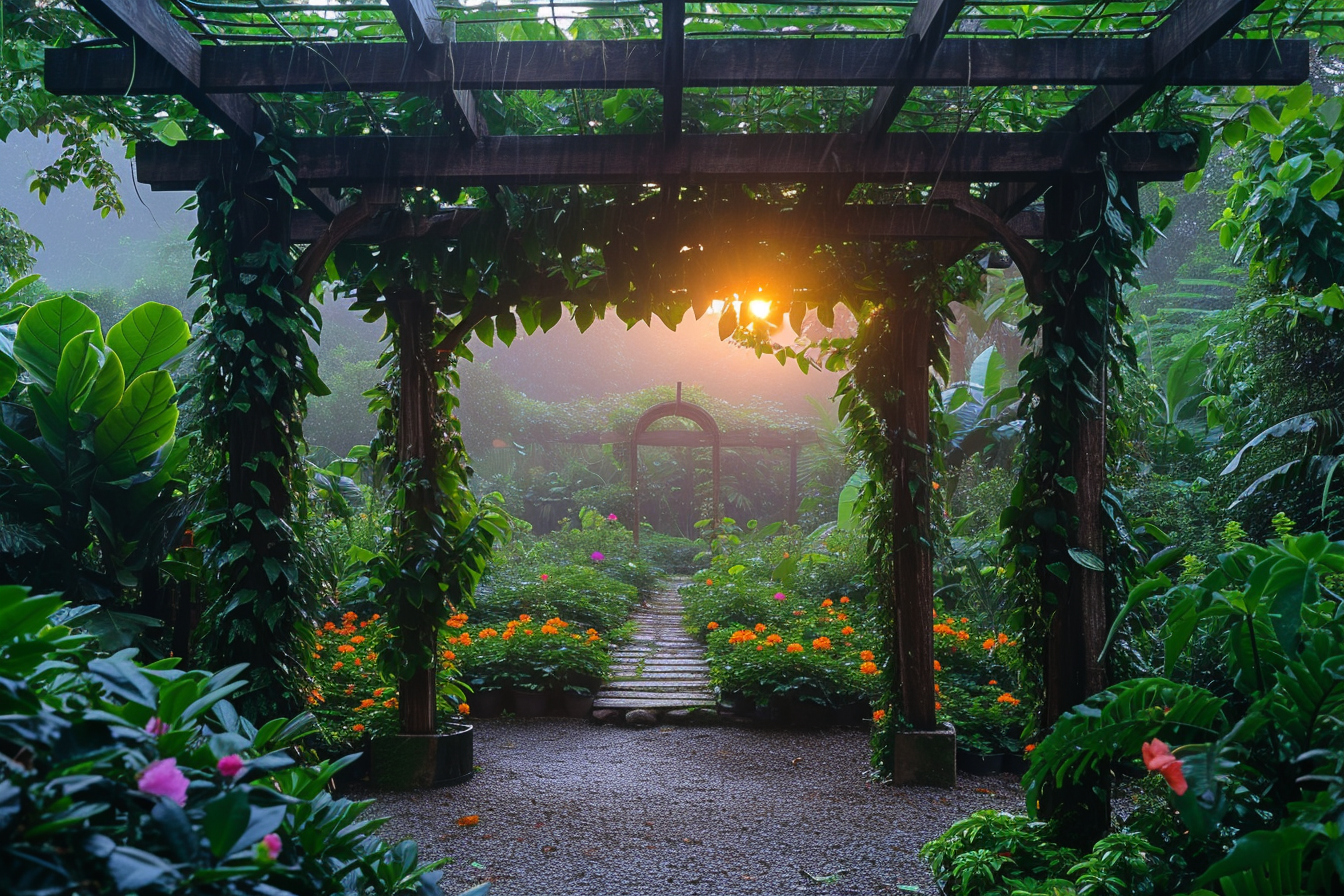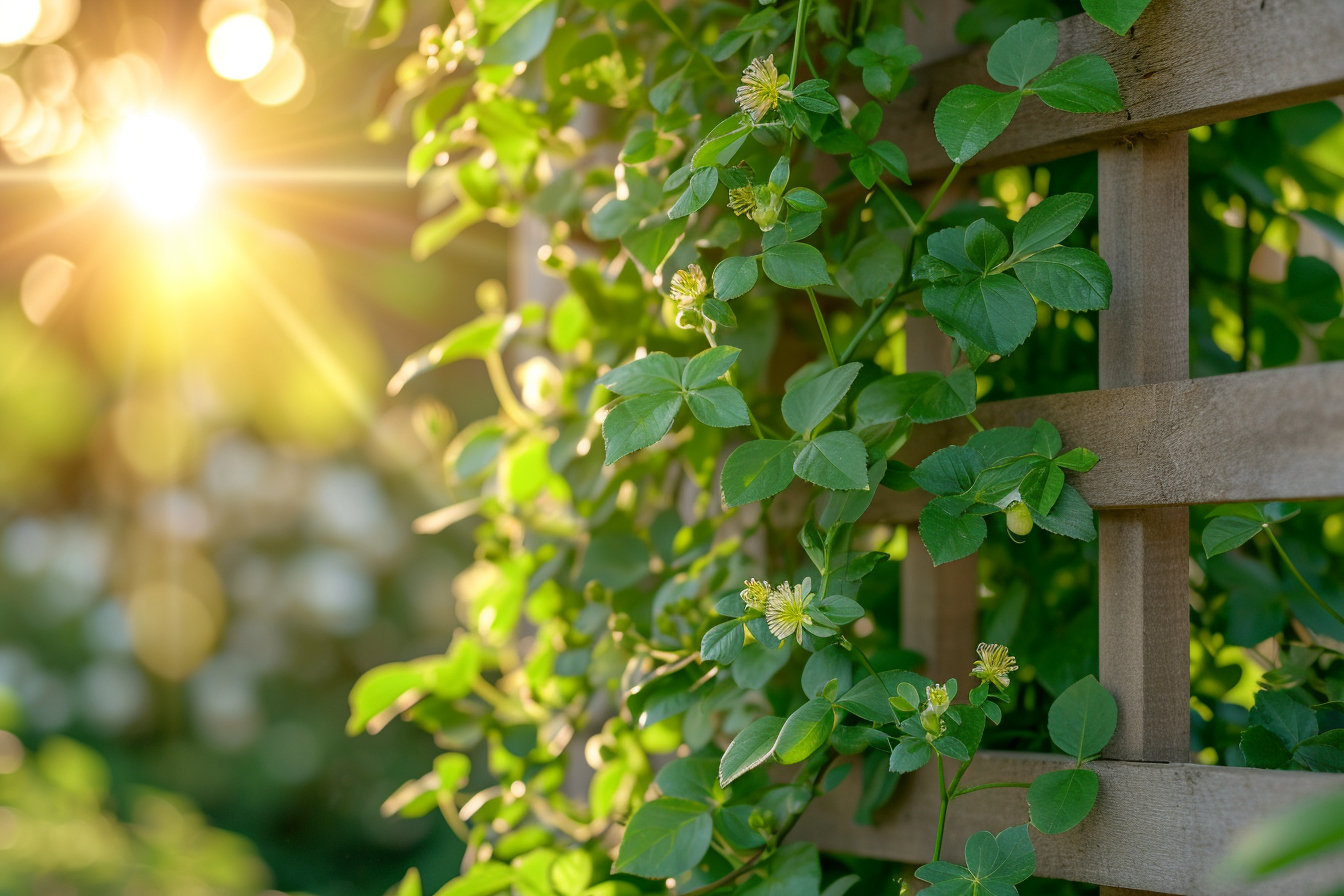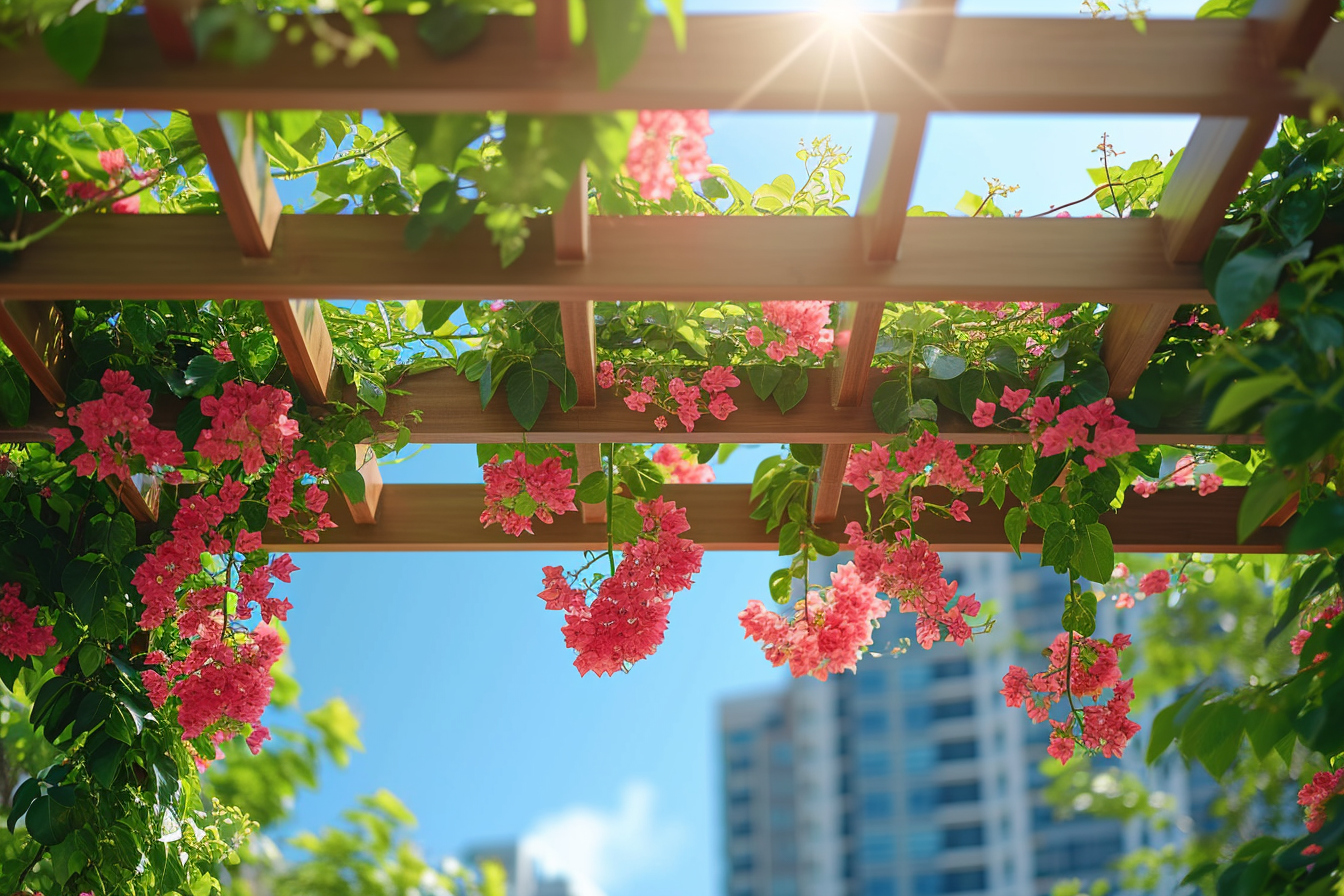Gardens have always been sanctuaries of peace and beauty, where the harmonious blend of flora and fauna provides an escape from the mundanity of everyday life. In urban environments, where horizontal space is often a luxury, gardening requires a creative approach. This is where vertical gardening comes into play, and what’s more fascinating than adding the exotic allure of climbing plants to your vertical gardens? Exotic climbing plants offer a unique aesthetic, their vigorous growth habits, and intriguing forms present an opportunity to transform plain walls and fences into living works of art.
Understanding exotic climbers
Before delving into creating your garden, it is crucial to understand the nature of exotic climbing plants.
Climbing mechanisms
Climbing plants, or lianas, have different ways of ascending:
- Twining vines use their stems to coil around a support structure.
- Tendril bearers develop thin, leafless organs that wrap themselves tightly around supports.
- Root climbers attach themselves to surfaces using small aerial roots.
- Scramblers do not have a true method of climbing but rely on other structures to prop themselves up.
Selecting the right type of climber is essential depending on the support structures you have in place.
Exotic species
Several exotic climbing plants can introduce a slice of the tropics into your garden:
- Passionflower (Passiflora), with its intricate flowers, quickly covers walls or trellises.
- Bougainvillea dazzles with its vibrant bracts that come in multiple hues.
- Jasmine (Jasminum spp.), known for its intoxicating fragrance.
- Climbing Hydrangea (Hydrangea petiolaris) delivers lush foliage and stunning white flower clusters.
These climbers not only bring beauty but also a sense of the exotic with their unusual blooms and foliage.
Designing with climbers
Designing a garden with climbing plants involves more than just choosing your favorite species.
Structural considerations
The very essence of vertical gardening lies in its use of upward spaces. Hence, the structures that will support your climbing plants are of primary importance. Pergolas, trellises, arbors, and even simple wire frames can become the backbone of your garden, underscoring the visual appeal of your climbers.
Light and shade
When creating your garden, be conscious of the light preferences of your selected plants. Some climbers, such as the Jade Vine (Strongylodon macrobotrys), require partial shade, while others, like the Flame Vine (Pyrostegia venusta), thrive in full sun.
Color palettes and textures
Exotic climbers provide bold colors and varied textures. Establishing a color theme can unify your garden’s appearance, while varying foliage can create fascinating visual contrasts. Consider the juxtaposition of the delicate leaves of a climbing fern against the robust, waxy leaves of a Dutchman’s Pipe (Aristolochia).
seasonality
Remember, some climbers are evergreen, providing year-round color, whereas others are decidarial, which can offer seasonal change. Think about how your garden will evolve throughout the year and plan for continuity of interest.
Selecting the right support system

Crafting the appropriate support systems for your climbing plants is pivotal to ensuring their health and the overall look of your garden.
Material selection
The materials chosen for your support structures give not only functional support but also contribute to the garden’s ambiance. Wood will offer a natural, warm feel but requires maintenance to prevent rot. Metal is durable and can be fashioned into intricate designs, while plastic supports are weather-resistant and can mimic other materials.
Size and durability
The projected growth size and weight of a mature plant should influence your choice of the structural framework. Thicker and stronger supports are necessary for substantial climbers like Wisteria. Meanwhile, lighter, less robust structures can suffice for more delicate climbers like Sweet Pea (Lathyrus odoratus).
Installation considerations
Thinking ahead about how your climbers will interact with their supports as they grow is crucial. Install supports that allow the plants ample space to develop and that can accommodate their method of climbing.
Soil and water requirements
Providing the right foundation for your climbing plants is indispensable for their prosperity.
Soil composition
Exotic climbers often require well-draining soil enriched with organic matter. Adding compost to your soil can improve fertility and texture, aiding root growth and water retention.
Watering needs
While many climbers are quite resilient once established, their watering needs differ greatly during the establishment period. It’s essential to keep the soil moist but not waterlogged to encourage a strong root system.
Planting and training
Introducing new plants to a garden is always an exciting endeavor and requires careful planning and execution.
propagation
Some exotic climbers can be propagated from seeds or cuttings. It’s advantageous to start new plants indoors where conditions can be controlled, before transferring them outdoors.
Initial planting
Getting your climbing plants off to the right start involves planting them at the proper depth and distance from their support. Ensure the hole is twice as wide as the root ball and as deep as the container.
Training techniques
Early training shapes the plant’s growth and directs it onto the support structure. Use soft ties to gently guide vines and stems in the desired direction without damaging the plant.
Maintenance and care
Regular maintenance is essential for the health and beauty of your climbing plant garden.
pruning
Pruning is not only for controlling growth but also for encouraging flowering in some species. Prune your climbers according to their specific needs, which may involve cutting back after flowering or thinning out overcrowded areas.
Pest and disease management
Climbing plants are not immune to pests and diseases. Regular inspection and prompt treatment using eco-friendly options are necessary for protecting your garden.
fertilization
Fertilization provides additional nutrients for healthier growth. The type and frequency of fertilizer application should match the particular needs of your climbers.
Integrating climbers into your landscape

To truly master vertical spaces, integrate your climbers with other elements of your garden for a holistic design.
Companion planting
Complement your climbing plants with shrubs, trees, or other flowers that share similar growing conditions. This will not only give depth to your garden but also encourage biodiversity.
Creating themed areas
Consider dedicating areas of your garden to specific themes, such as a tropical corner or a Mediterranean-inspired enclave. Your choices of climbers can greatly influence these themes.
Succession planting
Planning for what comes next can keep the garden engaging through all seasons. When one plant finishes blooming, ensure there are others ready to take the spotlight.
Innovations in vertical gardening
With constant advancements in gardening techniques, there are always new methods to explore for those willing to experiment. Vertical hydroponic systems or the integration of smart monitoring devices can revolutionize how we approach gardening in smaller spaces. These innovations should not be overlooked, as they might hold the key to overcoming certain challenges of urban gardening.
Final thoughts
The pleasure of mastering vertical spaces with exotic climbing plants lies in the perpetual journey of learning, experimenting, and evolving. Be open to modifying your approach according to the distinct personalities of your climbers and the feedback received from your living garden. Go beyond mere aesthetics; strive for a garden that is environmentally beneficial, sustainable, and serves as a haven for local wildlife.
By focusing on the tailored needs of individual plant species and understanding the intricate dance between form and function, you set the stage for a thriving vertical garden. Know that your dedication will elevate your gardening prowess, allowing you to curate a breathtaking vertical oasis that defies the constraints of the ground and reaches for the sky.


Leave a Reply